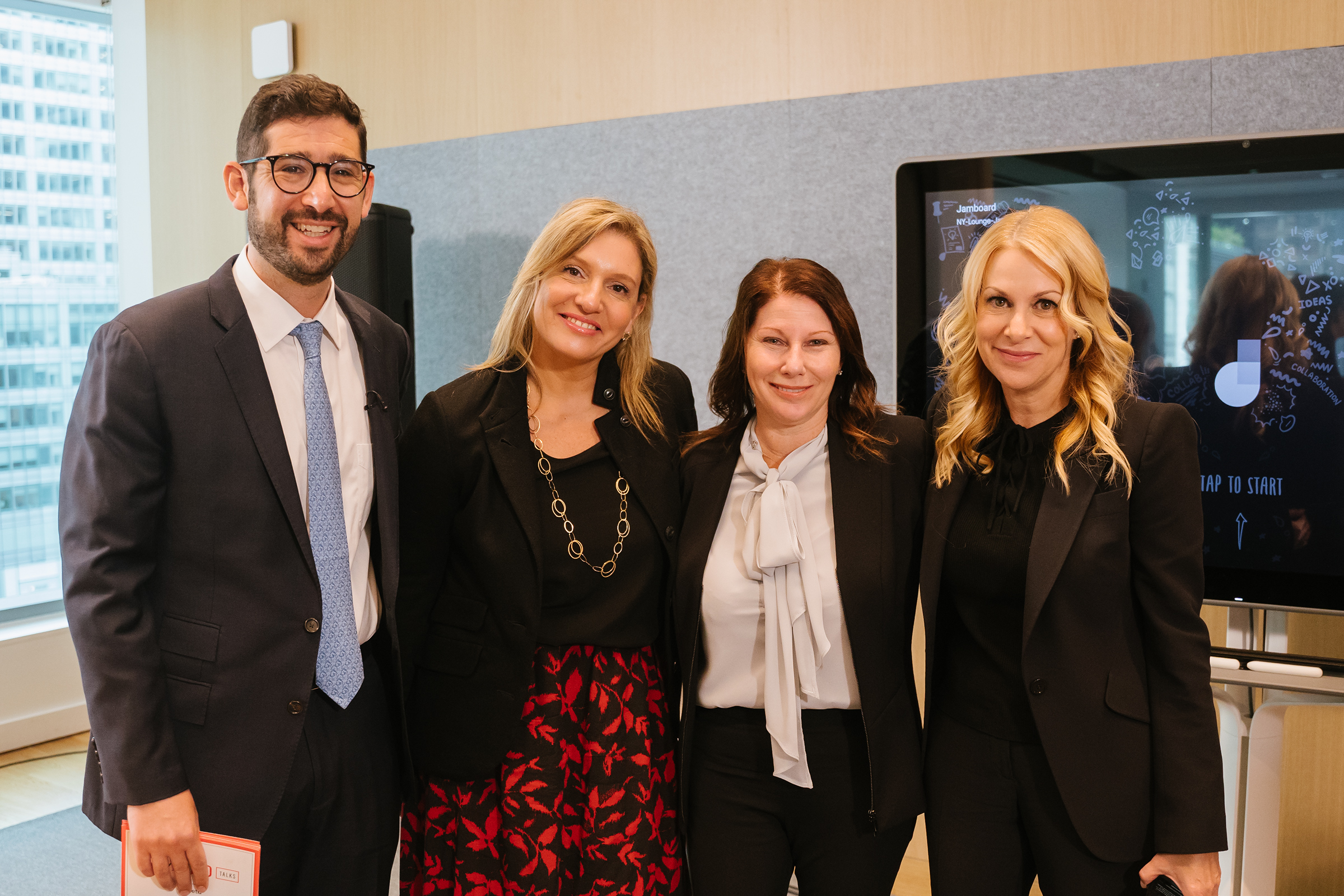
Since the launch of ChatGPT nearly a year ago, finding the right approach to tapping into the benefits of artificial intelligence has become a key focus for many businesses. Marketing leaders at Mastercard and EY discussed the opportunities and challenges of integrating AI into workflows in front of an audience of marketing executives at a TIME100 Talks event for advertising week on Wednesday.
Cheryl Guerin, executive vice president of global brand strategy and innovation at Mastercard and Janet Balis, marketing practice leader at EY Consulting in the Americas, joined TIME’s editor-in-chief Sam Jacobs at our New York City headquarters in Bryant Park for a conversation about how the technology stands to change the industry’s practices and the important role that human connections play in this transition.
While public awareness of the capabilities of artificial intelligence has been expanding over the last year, Guerin noted that for Mastercard, and many other companies, using AI tools is not entirely new. “Everyone’s using AI already to manage products and services every single day,” she said, noting that Mastercard has long used artificial intelligence systems to provide more targeted marketing and track trends.
But access to generative AI—models or algorithms that create completely new output, such as text, images, videos or code—brings with it the challenge of learning how to harness the powerful technology, Guerin said. “It makes everything a bit faster, a bit better, and a bit more efficient for us,” she said. “It’s an absolute multiplier on what we can do.”
For many companies, understanding how to best leverage AI will be a two-fold endeavor that requires an understanding of how it can be deployed both externally and internally, said Balis. “There’s this long term potential that is absolutely going to change the shape of companies. But then there’s these incredible micro uses.” While there has been consternation about whether advanced AI will take employment away from workers, Balis sees it as a tool that could help workers. “It’s really about thinking about every job—not whether it is going to be threatened—but what tasks are going to be easier,” said Balis.
One of the biggest hurdles in incorporating AI is ensuring that companies have the right data to fuel models. Balis cited a survey from the Mobile Marketing Association (MMA), a marketing trade group, which found that 78% of marketers had challenges with data validation and quality—a large roadblock to using AI systems effectively. “That’s a pretty big problem if you’re trying to create algorithms and machine learning and AI on top of the data,” said Balis. “No one would want to eat food with bad ingredients.”
In the effort to integrate AI into marketing practices, Guerin noted that it’s important for brands not to lose sight of the human touch that makes their brands unique.
“There’s a reality in the technicality of being able to trigger better personalization and better insights…but humans have to come in and have a creative touch and ensure that connection continues to happen,” she says. “If we lose that emotional connection that brands are creating will be gone as well.”
TIME100 Talks: Unlocking the Potential of AI in Marketing was presented by Meta.
